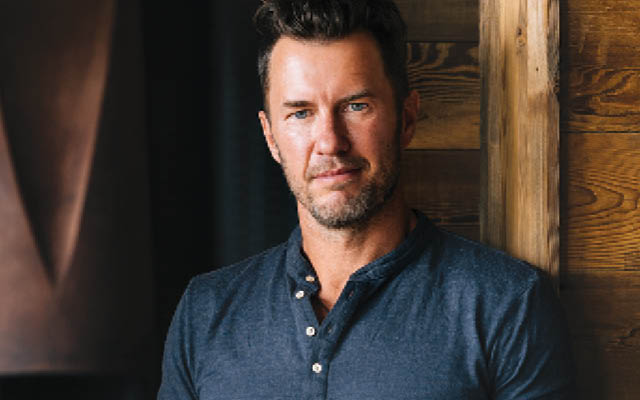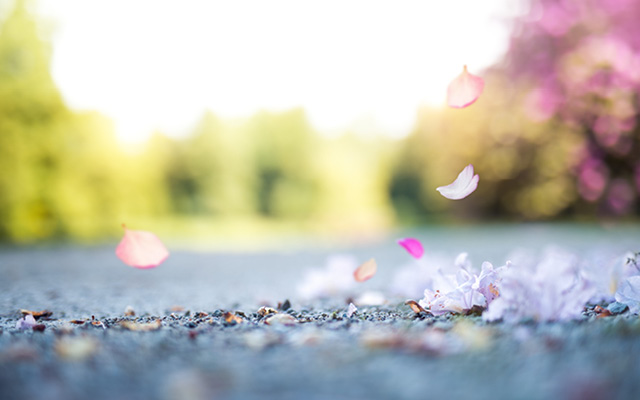Some of Blake Mycoskie’s best ideas arrive while he’s on vacation.
The native of Arlington, Texas, was in Argentina in 2006, taking a month off from a tiring work schedule, when he came up with the concept for TOMS Shoes. He’d traveled to the far Southern Hemisphere to study polo and relax, but he ended up starting the world’s first One-for-One business after meeting two aid volunteers in a café.
They were providing shoes to children who needed them to attend school, and their work inspired Mycoskie to create TOMS, which would donate a pair of new shoes to someone in need for every pair sold. During its One-for-One phase, TOMS donated more than 95 million pairs of shoes in more than 80 countries; it now dedicates a third of its earnings to a “giving fund” that supports charitable nonprofits.
More recently, Mycoskie was moved to create his next venture while floating on a surfboard. Alongside him was former Navy SEAL Pat Dossett, and they were wondering how they could make the world a better place as they contemplated the waves.
Recognizing that positive collective change starts with healthy, self-realized individuals, they agreed to commit the coming year to gathering a team to study human behavior. The team would include neuroscientists, life coaches, physical therapists, and mental-health experts. Mycoskie and Dossett wanted a program that would help one person at a time reach their highest potential for happiness, creativity, and health — and maintain it.
That led to the design of a 10-month behavior-change program called Madefor. Each month focuses on a single habit, such as hydration, sleep, or gratitude, and offers a kit with tools to help develop it. Notably, none of the tools is digital — analog is central to the mission of physical behavior change.
The choice to focus on a single behavior each month is also deliberate, based on the idea that the human brain is best suited to learning only one practice at a time. Likewise, routine repetition is helpful to making any healthy behavior into a habit.
The inquiry behind Madefor was at least partly personal for Mycoskie, 44, who notes that he has completed the program twice.
Though always animated by a mission to improve the world, he’s faced some personal challenges. When he stepped down from his role of CEO at TOMS and sold half the company in 2014, he found himself depressed for the first time.
He explains how Madefor helped change his mindset and behavior so he could begin to truly appreciate the life, and the family, he’s worked so hard to build.
Experience Life | How did you go from selling shoes to creating a program based in the science of behavior change?
Blake Mycoskie | I’ve always been curious about how to get the most out of life, but it wasn’t until I experienced depression that I discovered a passion to help others live better, too.
My depression really was the product of false expectations. Everything and everybody in my life told me that I would be “happy” when I built a great company that helped people, got married, had kids, had financial freedom, got accolades and awards. . . . But everything that would supposedly make me happy and give my life meaning was externally focused.
Once I did and had all these things and still did not feel a deep lasting peace and joy, I did not know where to turn. I didn’t know if I would ever truly be “happy.” The fear that happiness was unattainable led to the depression.
There are a lot of other factors that contributed as well, but I can now say that many of the Madefor practices and habits helped counter some of the negative influences and habits I had adopted while building a company and family in this modern society.
EL | How would you describe Madefor?
BM | Madefor is a 10-month program that applies the principles of modern neuroscience, psychology, and physiology to make your brain and body better.
EL | What would you say to someone who believes that human behavior is too complex to be reduced to scientific formulas?
BM | I would agree! But science does have some really powerful principles that we can draw on to help inform how best to navigate our unique lives and the environments we find ourselves in.
EL | Why is the Madefor program almost entirely analog?
BM | Our lead advisor, Andrew Huberman, PhD, is a neuroscientist at Stanford who specializes in an area of research called neuroplasticity, which studies our brains’ ability to change and grow. Huberman notes that an important part of neuroplasticity is managing your focus and attention, which is hard to do if you’re head down in a device, app, or screen that’s constantly pinging with alerts and notifications.
And my cofounder, Pat Dossett, likes to say that if you have to look outside yourself to understand how you are feeling or performing — which is what we do when we look at screens — then you’ve missed a critical step: understanding from the inside out how your actions are affecting you.
EL | Has Madefor helped you change your own behavior or thinking?
BM | I like to be on the move. I’m always seeking the next adventure or creating a perfect moment to share with the people in my life. In the past my focus was always on the results of my effort, about finding the peak. Since Madefor, I’ve learned to enjoy the journey more.
It has also helped me forge a more resilient mind. I see short-term setbacks in a more positive light now, recognizing that this is part of the journey and not a sign that I’m incapable of getting where I want to go.
For example, getting my kids dressed and out onto the slopes for ski school is a massive ordeal. It sounds like a small thing, but now, the struggle doesn’t really bother me. In fact, some days we never make it to the slopes, and I’m OK with that, too.
To me, this shows how Madefor has helped me be more compassionate. Often we think of compassion as something you have for others — but I now see that it’s also about the grace we extend to ourselves. We may begin each day with the best of intentions, but sometimes things don’t go as planned. We fall short or fall off entirely, and that’s OK. We’re human.
I’ve found that extending myself the same compassion I give to others allows me to be more resilient and helps keep me on my path.
EL | What healthy habits do you come by naturally?
BM | Doing something physical every day helps me stay sane. It could be a great workout, surfing, rock climbing. Being active is my normal state of being.
EL | The words “The more you give, the more you live” are featured prominently on your website. Is this a motto you live by?
BM | Yes, this is definitely something I live by. You can’t take material possessions with you. So, whether it’s giving to a local nonprofit, investing in a new startup I believe in, or fulfilling a bucket-list item for someone close to me, it all brings me an immense amount of joy.
In my daily life, it really starts with my kids and my partner. I find that if I wake up thinking how I can serve them, help them, give to them in a way that meets their needs, then my needs almost always get taken care of naturally.
Outside of my family, I always try to have a few key nonprofits I am supporting, so I stay connected to how much need there is in the world and the amazing people on the front lines addressing it.
EL | The past year was difficult, and we’ll be recovering from 2020 for some time. Are you as hopeful about our collective future as you are for individuals seeking change?
BM | Yes, I am hopeful. I believe one day we will look back on the challenges we are currently navigating as the very things that made us — maybe even forced us to — be better.




This Post Has 0 Comments